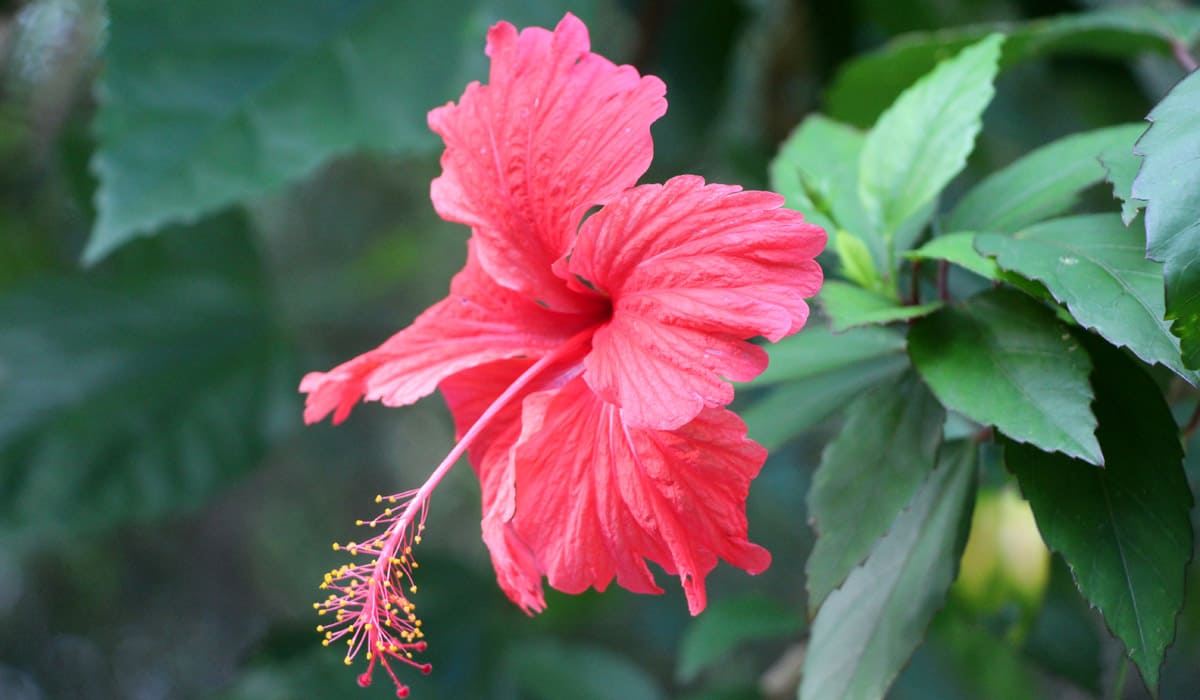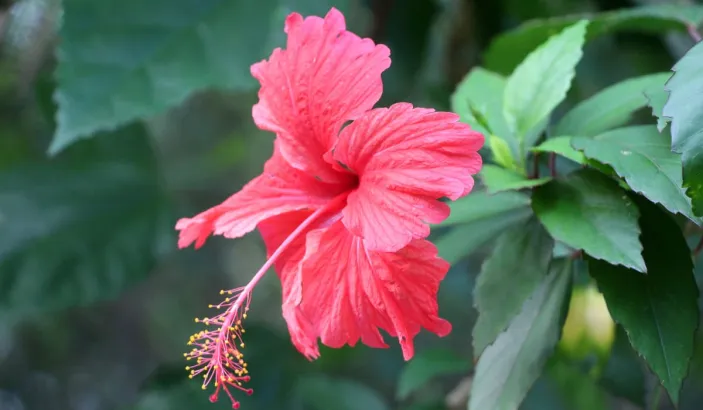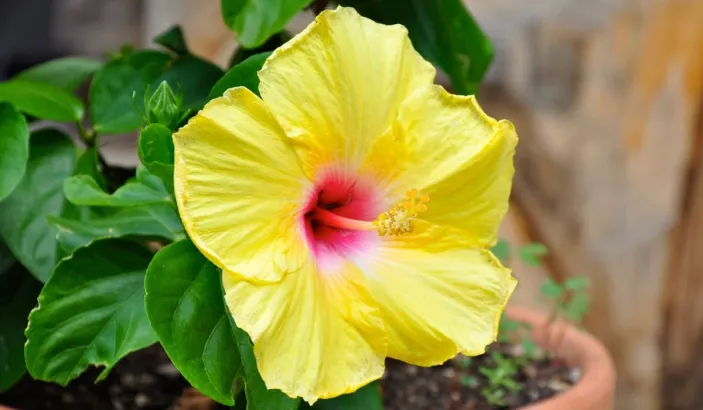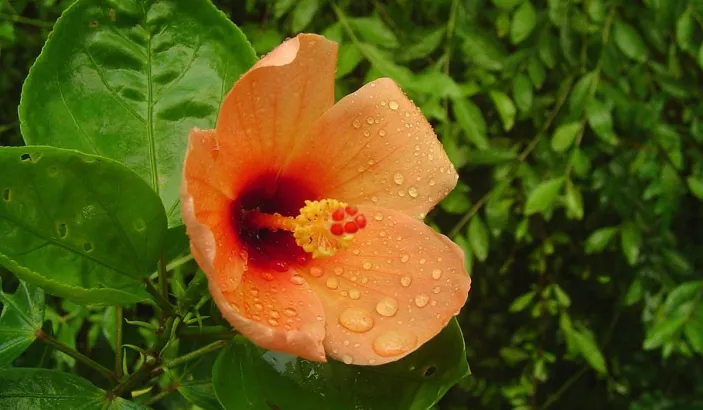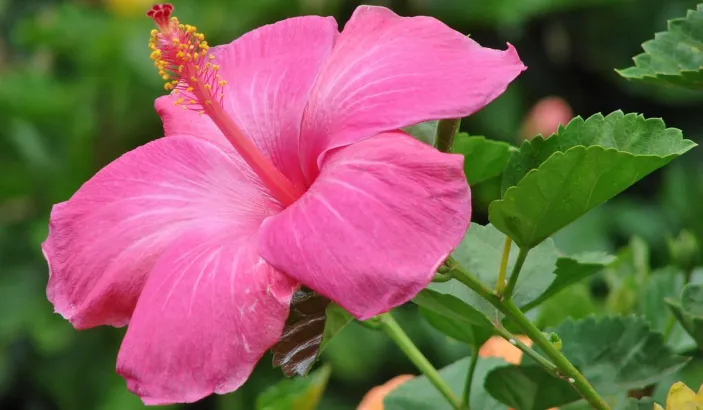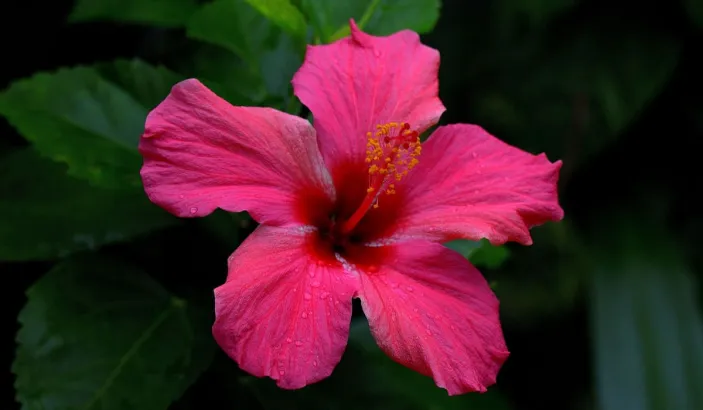Description
Hibiscus, whose scientific name is Hibiscus spp, comes from the Greek word for marshmallow. It is a genus of annual or perennial flowering plants with several hundred species. Hibiscus is a member of the Malvaceae family.
These plants have been known since ancient times. In fact, they were cultivated in Egypt and Southeast Asia for their ornamental value, as well as for their edible fruit.
Imported to Europe in the 12th century by the Spanish Moors, certain species were brought to America in the 17th century by slaves.
The shrub can grow up to 5m high and as wide. Leaves are alternate, simple, oval or lanceolate, with toothed or wavy margins.
Flowers are generally actinomorphic, i.e. centrally symmetrical, and can be isolated or grouped in inflorescence.
The calyx has five free sepals, while the corolla has five petals, free or slightly fused at the base.
The numerous stamens are fused, forming a long tube.
The pistil often has five ovaries and a long style passing inside the stamen tube. The stigma opens only when the stamens are withered, allowing cross-fertilization.
Fruits are capsules that open at maturity to release the often hairy seeds.
Flowers are monochrome or bicolored. They are twisted before opening completely. They can appear from March to October if the plant is in the right conditions. However, some cultivars can flower all year round. One species, the Chinese Rose hibiscus, closes and falls after 24 hours.
Presence in Martinique
Of course, hibiscus is very present in Martinique, from the north to the south of the island. It colors the fronts of local houses beautifully. They come in all colors, from bright red to orange, yellow and pale pink. The hibiscus and hummingbird are often used as the island's logo, so important is the hibiscus to the island.
But hibiscus is not only found in Martinique. It can be found all over the tropical part of the globe, and there are many, many species! In fact, there are over 200 species and almost 30,000 varieties worldwide.
It is the national flower of Malaysia and the emblem of the Hawaiian archipelago. The most widely cultivated species in the world is “Rosa sinensis”, also known as “China rose”, with its large, bright red flowers.
Hibiscus is planted mainly for ornamental purposes, but several species also have medicinal properties. Hibiscus is a urinary antiseptic and diuretic. The flowers remedy menstrual pain. The root is used to soothe coughs and clear the respiratory tract. Hibiscus is recommended for combating high blood pressure and cholesterol. Dried flowers are used to make karkade, a very popular drink in Africa, particularly Egypt.
Hibiscus makes a refreshing drink and is also a mild laxative. It is antibacterial, anti-inflammatory and analgesic. It is a diuretic and relaxes uterine muscles.
Its soothing virtues mean that it is used in many beauty products (shower gel, body lotion, soaps).
Care
Most species are heat-loving plants due to their tropical origins (20° to 32°C seems ideal). Hibiscus is a plant that needs a lot of light (at least 6 hours a day). However, strong, direct sunlight throughout the day is totally detrimental.
It needs to be watered if its climate is not conducive to frequent rainfall. So remember to water twice a week, waiting for the soil to dry out completely between waterings. In temperate climates, it requires less watering in winter and autumn.
Many diseases can threaten the health of your hibiscus. A hibiscus that wilts or whose leaves turn inwards is a hibiscus that is suffering from too much heat or too much exposure to the sun. To remedy the situation, relocate the plant. Severe leaf drop on hibiscus, on the other hand, is a sign of excess water. If flower buds drop before they open, it's because the air near the plant is too dry (heat source nearby).

